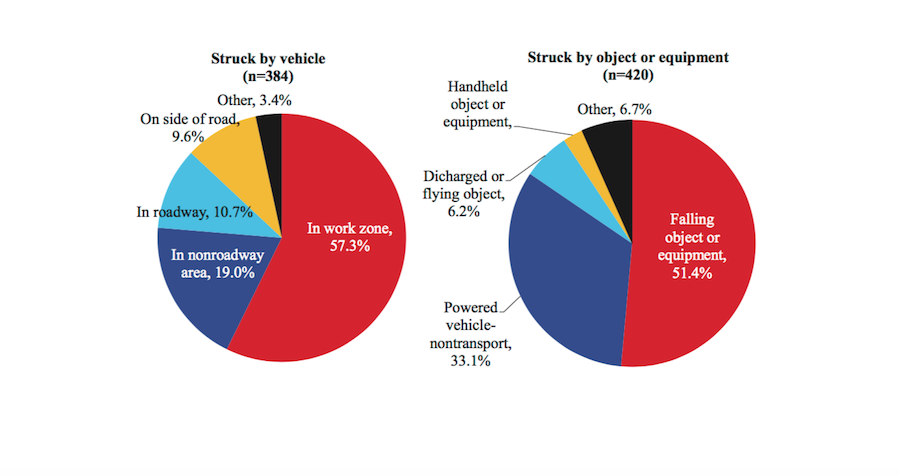Most people understand that road construction and maintenance workers are at risk of being hit and injured or killed by a motorist or equipment in a work zone. What may be less well known is how often being struck by a tool or material injures construction workers on the job.
The words "struck by" are used to designate the same general safety-hazard category in which vehicular accidents are often studied.
That reality of falling tools and materials was brought out in a recent report from the Center for Construction Research and Training, a union-funded group, on the general subject of struck-by accidents and their prevention.
While the report covered the recent statistical trends of such accidents, which rise and fall with the amount of economic activity and construction work being performed, it also encompassed different types of injuries and accident causes and their victims. The report spanned roadside maintenance work done by government employees, laborers employed by government or contractors, and the craft workers needed to create the structural frames, cladding, and plumbing, mechanical and electrical systems of buildings and industrial facilities.
In the 2011-2015 period studied, fatal struck-by injuries involving a tool, material or powered transport equipment outnumbered the struck-by fatalities from a vehicle, 420 deaths versus 384, according to the center's research team.
Passenger vehicles and trucks accounted for the majority of those vehicle-related deaths, 114 and 112, respectively.
The Things That Hit Construction Workers
When it comes to all the different things that hit workers, the picture gets a little bit murkier, due mainly to differences and complications with records and sources. One category—construction, logging and mining machinery—accounted for 78 deaths. Building materials, or solid elements, accounted for 74.
Notably, construction workers who were injured but not killed were struck more often by hand tools than by materials.
Together, powered and non-powered hand tools accounted for 5,790 injuries, while solid building materials injured 3,500 workers during the period studied, according to the center's researchers. The rest of the nonfatal struck-by injuries occurred when workers were hit by everything from furniture, fixtures, ropes, connectors, containers and, obviously, vehicles on the highway.
The injured workers were concentrated most often in masonry and residential construction. Concrete placement, foundation work, plumbing, heating and air-conditioning also accounted for many injuries of this type. Helpers and sheet-metal workers were the most frequently hurt this way, with a total of 1,190 such injuries in the period studied. Taken together, however, heating, mechanical and air-conditioning workers accounted for more nonfatal struck-by injuries, with 1,360.



Post a comment to this article
Report Abusive Comment